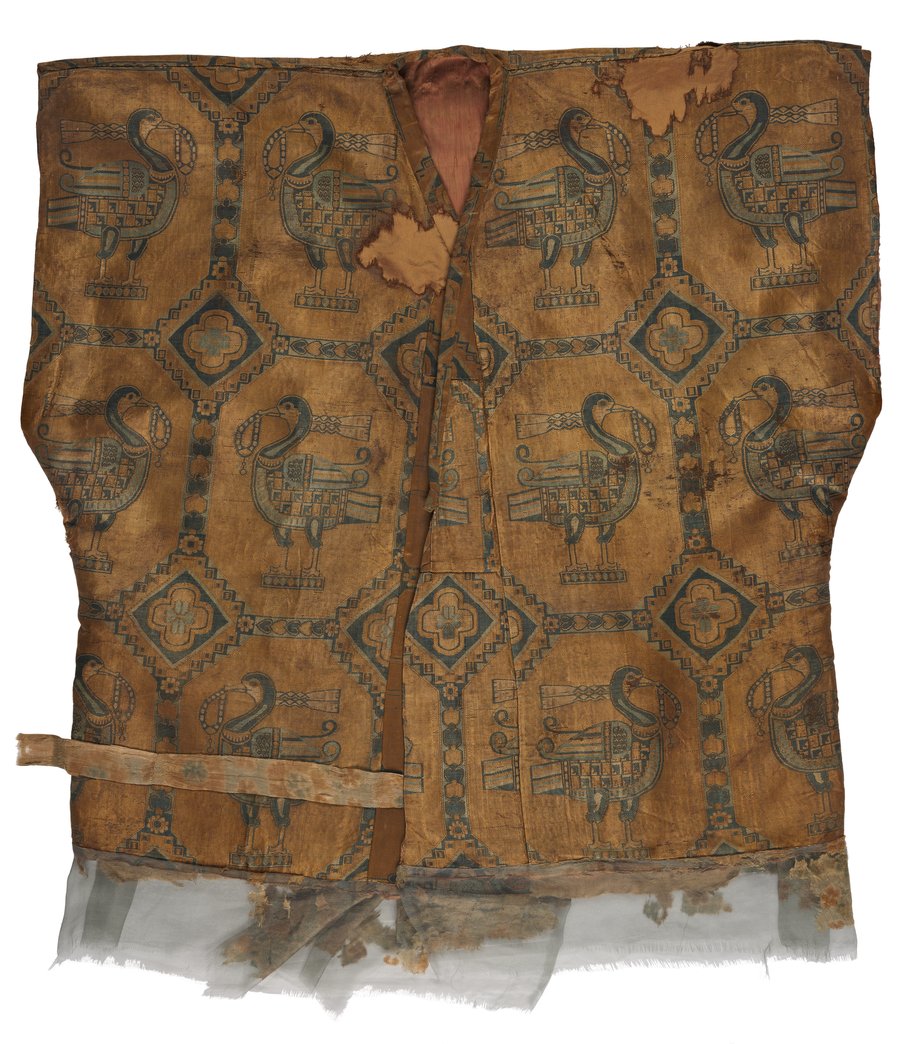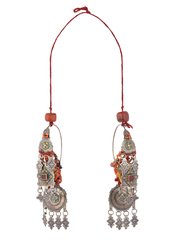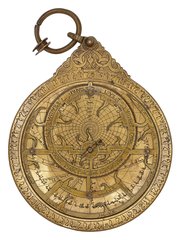
A Short Silk Tunic-Shaped Jacket
Museum of Islamic Art
- Title:
- A Short Silk Tunic-Shaped Jacket
- Production place:
- Central Asia
- Date:
- 600 - 800
- Period:
- Sogdian
- Title:
- A Short Silk Tunic-Shaped Jacket
- Production place:
- Central Asia
- Date:
- 600 - 800
- Period:
- Sogdian
- Material:
- Silk
- Technique:
- Weaving, Sewing, Resist dyeing
- Dimensions:
- 85 × 73 cm
This sleeveless, boxy-cut jacket presents a motif of pairs of confronted duck and has been realized sewing together three large pieces (plus few fragments) of silk samite, a polychrome patterned textile much traded along the Silk Road, whose earliest surviving examples date to the Chinese Tang dynasty (7th-9th century CE). The pattern of ducks holding a string of pearl on a ribbon is a well-known motif of Sasanian origin that enjoyed long-lasting popularity. What makes this textile stand out is the peculiar square grid framing the ducks that substitutes the more usual pearl roundels often present on these textiles. This element, together with the rather geometric rendering of the birds, the heart-shaped motif on the frames, and the four-leaf rosettes point to a Western Asian origin for this textile. Another remarkable feature is the survival of fragments of clamp-resist dyed silk sewn on the bottom hem, part of the jacket’s lower structure. Due to the fragile nature and the fragmentary state of many of these textiles, most of our knowledge about fashion trends across the Silk Road relies on the surviving painted cycles and the sculptures excavated in sites spanning from Sogdiana (Central Asia) to Inner Mongolia and China. Considering the tendentially form-fitting shapes of Central Asian clothes, especially for men, this jacket must have been used as an outer garment most likely tied on the right side, allowing a visually smooth continuation of the pattern.



